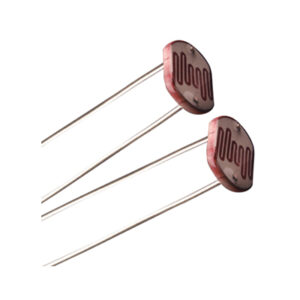Brush DC motors are mechanically commutated motors that are good for high speed applications where responsiveness and small package size is needed. Brush DC motors are easy to drive and cost effective when long life is not required.
A Brush DC Motor provides precision control of speed, driven by a direct current. Noted for a particularly high ratio of torque to inertia, the Brush DC Motor has the potential to supply three to four times more torque than its rated torque. If needed, it can even provide up to five times more, without stalling. The Brush DC Motor consists of six different components: the axle, armature/rotor, commutator, stator, magnets, and brushes. The Brush DC Motor offers stable and continuous current, using rings to power a magnetic drive that operates the motor’s armature. Perhaps one of the earliest used motors, the Brush DC Motor is commonly used because of the ability to vary the speed-torque ratio in almost any way.
Fig: SIMPLE TWO-POLE BRUSHED DC MOTOR
PRINCIPLE OF OPERATION:
Stator: The stator generates a stationary magnetic field that surrounds the rotor. This field is generated by either permanent magnets or electromagnetic winding’s. The different types of BDC motors are distinguished by the construction of the stator or the way the electromagnetic winding’s are connected to the power source.
Rotor: The rotor, also called the armature, is made up of one or more winding’s. When these winding’s are energised they produce a magnetic field. The magnetic poles of this rotor field will be attracted to the opposite poles generated by the stator, causing the rotor to turn. As the motor turns, the winding’s are constantly being energised in a different sequence so that the magnetic poles generated by the rotor do not overrun the poles generated in the stator. This switching of the field in the rotor winding’s is called commutation.
Brushes and Commutator: Unlike other electric motor types (i.e., brushless DC, AC induction), BDC motors do not require a controller to switch current in the motor winding’s. Instead, the commutation of the winding’s of a BDC motor is done mechanically. A segmented copper sleeve, called a commutator, resides on the axle of a BDC motor. As the motor turns, carbon brushes slide over the commutator, coming in contact with different segments of the commutator. The segments are attached to different rotor winding’s, therefore, a dynamic magnetic field is generated inside the motor when a voltage is applied across the brushes of the motor. It is important to note that the brushes and commutator are the parts of a BDC motor that are most prone to wear because they are sliding past each other.
Brush DC Motor Types
There are five basic Brush DC Motor types:
Brushed shunt mount Brush DC Motor: A brushed shunt wound Brush DC Motor will run at constant speed regardless of the load.
Brushed series wound motor: Speed varies automatically with the load, increasing as the load decreases. This series wound motor is usually limited when heavy power demand is necessary.
Brushed compound Brush DC Motor: A combination of the brushed shunt and brushed series wound motors, combining the characteristics of both. These brushed compound motors are usually used when severe starting conditions are met and constant speed.
Brushed permanent magnet Brush Motor: As the name implies, these contain permanent magnets, which eliminate the need for external field current. This design yields a smaller, lighter, and energy efficient Brush DC Motor.
Brushed separately excited Brush Motor:These are used for their high torque capability at low speeds. This is achieved by separately generating a high stator field current and enough armature voltage to produce the required rotor torque current.
Advantages:
- Controlling the speed of a Brush DC Motor is simple. The higher the armature voltage, the faster the rotation. This relationship is linear to the Brush DC Motor’s maximum speed.
- The maximum armature voltage which corresponds to the rated speed of a Brush DC Motor (a Brush DC Motor is usually given a rated speed and a maximum speed, such as 1750/2000 rpm), are available in certain standard voltages, which roughly increase in conjunction with horsepower.
- The Brush DC Motor has a simple construction, therefore may not require a controller. When a controller is chosen, it is typically a simple and inexpensive drive design.
- Understandable design technology facilitates in the quick application of the DC Brush Motor
- The design of the Brush DC Motor is quite simple, in that a permanent magnetic field is created by either of two means; permanent magnets or electro-magnetic windings.
Disadvantages
- A Brush DC Motor is less reliable in control at lowest speeds.
- A Brush DC Motor is physically larger than other motors producing equivalent torque.
- A Brush DC Motor is considered high-maintenance, which is not true of brushless DC motors.
- Higher resistance than brushless.
- For more information please visit: tenettech.com
- For technical query please send an e-mail: info@tenettech.com








